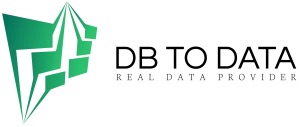Fake ads, dissatisfied users, falling sales… We explain what cyber fraud or cybersquatting is and how to know if your brand is suffering from this practice.
July 4, 2024
Cybersecurity
The way people and businesses interact, trade and communicate has changed thanks to the Internet. However, along with the exponential increase in Internet use, new forms of abuse and exploitation have also emerged. Cyber fraud, or cybersquatting, is one of the most deceptive practices and can jeopardize the integrity of e-commerce and commercial brands.
Cybersquatting , also known as domain name appropriation
Is the act of registering a certain domain name that resembles a real one in order to traffic it or use it for fraudulent purposes. Cybersquatters, in addition to cloning the store, create fake ads on different platforms to reach a greater number of users to scam.
When is a brand considered to be list of iran consumer email suffering from trademark impersonation?
According to the World Intellectual Property Organization (WIPO), for cybersquatting or brand impersonation to occur, some of the following practices must be carried out:
These lookalike domains divert web traffic to the
Cybersquatters register lookalike domain names that are close variants of well-known brands . They might register “pay-pal.com” instead of “paypal.com,” for example. cybersquatter’s website by taking advantage of common user typos.
Another common practice is cro and artificial intelligence: can we leverage ai to improve conversion? the creation of fake stores that appear to be from the original brand and the What is cybersquatting dissemination of these through fake advertisements on social networks and Google Ads.
Typo exploitation, also known as esperanto leads typosquatting, is a very common practice for cyber fraud and online identity theft. This practice focuses on capturing web traffic from searches with errors, leading the user to a fake web page . A typical example of typosquatting is a domain like “facebok.com” instead of “facebook.com”.







